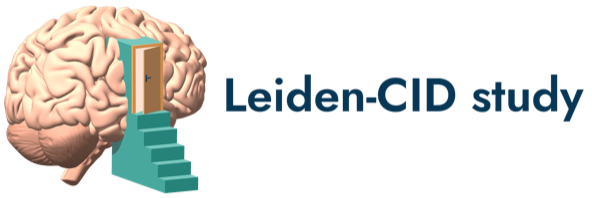-
measure Rosenberg Self-Esteem Scale (RSE)
Study: Netherlands Twin Register Mode of collection: SelfAdministeredQuestionnaire Available measurements: Young Netherlands Twin Register YS_DHBQP YS_DHBQ14 YS_DHBQ16 YS_DHBQ18 YC_BS2The Rosenberg Self-Esteem Scale (RSE) is a 10-item scale that measures global self-worth in adolescents by measuring both positive (5 items) and negative (5 items) feelings about the self. Although originally constructed as a Guttman-type scale (i.e., items with an ordinal pattern on the attribute), most researchers use a 4-point response format ranging...Created October 17, 2024 • Updated October 20, 2024 -
measure Self-concept Clarity Scale (SCC)
Study: RADAR Mode of collection: SelfAdministeredQuestionnaire Available measurements: Old Cohort RO - W1 RO - W2 RO - W3 RO - W4 RO - W5 RO - W6 RO - W7 RO - W8 RO - W9 RO - W10 RO - W11 RO - W12 RO - W13 RO - W14
Young Cohort RY - W1 RY - W2 RY - W3 RY - W4 RY - W5 RY - W6 RY - W7 RY - W8 RY - W9 RY - W10 RY - W11The Self-Concept Clarity Scale (SCC) assesses the extent to which the self-image is clear, confidently defined, internally consistent, and stable over time.Created October 17, 2024 • Updated October 20, 2024 -
measure Conflict Resolution Style Inventory (CRSI)
Study: RADAR Mode of collection: SelfAdministeredQuestionnaire Available measurements: Old Cohort RO - W1 RO - W2 RO - W3 RO - W4 RO - W5 RO - W6 RO - W7 RO - W8 RO - W9 RO - W10 RO - W11 RO - W12 RO - W13 RO - W14
Young Cohort RY - W1 RY - W2 RY - W3 RY - W4 RY - W5 RY - W6 RY - W7 RY - W8 RY - W9 RY - W10 RY - W11The Conflict Resolution Styles Inventory (CRSI) assesses how people deal with conflicts, such through conflict engagement, problem solving, withrdawal and/or compliance as a self-report scale.Created October 17, 2024 • Updated October 20, 2024 -
measure Big Five Inventory (BF)
Study: RADAR Mode of collection: SelfAdministeredQuestionnaire Available measurements: Old Cohort RO - W1 RO - W2 RO - W3 RO - W4 RO - W5 RO - W6 RO - W7 RO - W8 RO - W9 RO - W10 RO - W11 RO - W12 RO - W13 RO - W14
Young Cohort RY - W1 RY - W2 RY - W3 RY - W4 RY - W5 RY - W6 RY - W7 RY - W8 RY - W9 RY - W10The Big Five Inventory (BFI) is a self-report scale that is designed to measure the big five personality traits (extraversion, agreeableness, conscientiousness, neuroticism, and openness).Created October 17, 2024 • Updated October 20, 2024 -
measure Temperament Profiles List
Study: TRAILS Mode of collection: SelfAdministeredQuestionnaire Available measurements: Population cohort POP - T2 POP - T3
Clinical cohort CC - T2 CC - T3Short Temperament Profiles is a self-developed assessment of temperament, in which respondents are asked to indicate to what extent certain character traits apply to the child. Character traits included are concentration, perseverance, impulse control, fearfulness, frustration-sensitivity, shyness, adventurousness, affection, and emotional lability.Created October 17, 2024 • Updated October 20, 2024 -
measure Adult Temperament Questionnaire (ATQ)
Study: TRAILS Mode of collection: SelfAdministeredQuestionnaire Available measurements: Population cohort POP - T2
Clinical cohort CC - T2The Adult Temperament Questionnaire (ATQ) is a 77-item questionnaire that measures self-reported effortful control, negative affect/neuroticism, extraversion/surgency, and orienting sensitivity. Each item is scored on a 7-point Likert-scale.Created October 17, 2024 • Updated October 20, 2024 -
measure Early Adolescent Temperament Questionnaire (EATQ)
Study: TRAILS Mode of collection: SelfAdministeredQuestionnaire Available measurements: Population cohort POP - T1 POP - T3 POP - T4 POP - T5
Clinical cohort CC - T1 CC - T3 CC - T4 CC - T5The Early Adolescent Temperament Questionnaire (EATQ) is designed to specifically tap experiences common to adolescents, and is available in self- and parent-report formats. It assesses temperament and self-regulation via adaptation of scales used in studies of children and adults. It has 10 subscales: Activation Control (the capacity to perform an action...Created October 17, 2024 • Updated October 20, 2024 -
measure Behavioral Inhibition and Activation Scale (BIS/BAS)
Study: TRAILS Mode of collection: SelfAdministeredQuestionnaire Available measurements: Population cohort POP - T2
Clinical cohort CC - T2The Behavioral Inhibition and Activation Scales (BIS/BAS) measure behavioral inhibition (BIS) and behavioral activation (BAS). This instrument consists of one inhibitory factor (BIS scale) and three activational factors (BAS scales). The BIS scale includes items that refer to the anticipation of punishment. The BAS scales consist of items that refer to...Created October 17, 2024 • Updated October 20, 2024 -
measure Early Adolescent Temperament Questionnaire - Effortful control (EATQ-EC)
Study: L-CID Mode of collection: SelfAdministeredQuestionnaire Available measurements: Early Childhood Cohort ECC - T6-Covid
Middle Childhood Cohort MCC - T3 MCC - T4 MCC - T5 MCC - T5-Covid MCC - T6 MCC - T7The Early Adolescent Temperament Questionnaire (EATQ) is designed to specifically tap experiences common to adolescents, and is available in self- and parent-report formats. It assesses temperament and self-regulation via adaptation of scales used in studies of children and adults. It has 10 subscales: Activation Control (the capacity to perform an action...Created October 17, 2024 • Updated October 20, 2024 -
measure Social Responsiveness Scale - short form (SRS)
Study: L-CID Mode of collection: SelfAdministeredQuestionnaire Available measurements: Early Childhood Cohort ECC - T5
Middle Childhood Cohort MCC - T3 MCC - T4 MCC - T6The Social Responsiveness Scale (SRS) is a quantitative measure of autistic traits. The SRS has demonstrated good psychometric properties and cross-cultural validity for Autism Spectrum Disorder (ASD) assessment. Different versions may be available for different cohorts.Created October 17, 2024 • Updated October 20, 2024 -
measure Behavioral Inhibition and Activation Scale (BIS/BAS)
Study: L-CID Mode of collection: SelfAdministeredQuestionnaire Available measurements: Middle Childhood Cohort MCC - T3 MCC - T4 MCC - T5 MCC - T6 MCC - T7The Behavioral Inhibition and Activation Scales (BIS/BAS) measure behavioral inhibition (BIS) and behavioral activation (BAS). This instrument consists of one inhibitory factor (BIS scale) and three activational factors (BAS scales). The BIS scale includes items that refer to the anticipation of punishment. The BAS scales consist of items that refer to...Created October 17, 2024 • Updated October 20, 2024 -
measure Early Adolescent Temperament Questionnaire - Discomfort, Fear, Perceptual sen...
Study: L-CID Mode of collection: SelfAdministeredQuestionnaire Available measurements: Middle Childhood Cohort MCC - T4 MCC - T6 MCC - T7The Early Adolescent Temperament Questionnaire (EATQ) is designed to specifically tap experiences common to adolescents, and is available in self- and parent-report formats. It assesses temperament and self-regulation via adaptation of scales used in studies of children and adults. It has 10 subscales: Activation Control (the capacity to perform an action...Created October 17, 2024 • Updated October 20, 2024 -
measure Early Adolescent Temperament Questionnaire-Revised (EATQ-R)
Study: YOUth Mode of collection: SelfAdministeredQuestionnaire Available measurements: Child and Adolescent 9 years 12 yearsThe Early Adolescent Temperament Questionnaire (EATQ) is designed to specifically tap experiences common to adolescents, and is available in self- and parent-report formats. It assesses temperament and self-regulation via adaptation of scales used in studies of children and adults. It has 10 subscales: Activation Control (the capacity to perform an action...Created October 17, 2024 • Updated October 20, 2024 -
measure Brief Barrat Impulsivity Scale (Brief-BIS) and risk behavior (substance (ab)use)
Study: YOUth Mode of collection: SelfAdministeredQuestionnaire Available measurements: Child and Adolescent 9 years 12 yearsThe Barratt Impulsivity Scale (Brief-BIS) is a commonly used self-report scale for the assessment of the personality construct of impulsiveness. It measures 3 theoretical subtraits, namely, attentional, motor, and non-planning impulsiveness.Created October 17, 2024 • Updated October 20, 2024 -
measure Big Five Inventory (BFI)
Study: YOUth Mode of collection: SelfAdministeredQuestionnaire Available measurements: Baby and Child 6 years
Child and Adolescent 9 years 12 yearsThe Big Five Inventory (BFI) is a self-report scale that is designed to measure the big five personality traits (extraversion, agreeableness, conscientiousness, neuroticism, and openness).Created October 17, 2024 • Updated October 20, 2024





